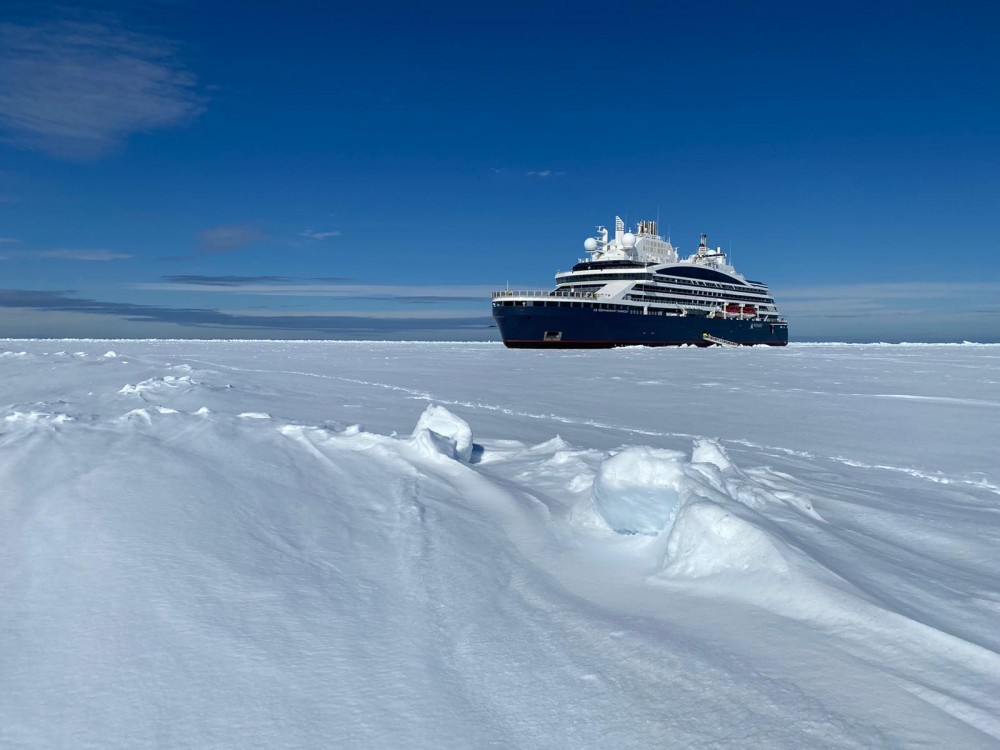A hybrid-electric luxury cruise ship has reached the North Pole for the first time
The French-flagged cruise ship Le Commandant Charcot uses LNG-powered hybrid-electric engines.

On Monday morning, the Ponant cruise ship Le Commandant Charcot arrived at the North Pole, only a few days after the ship sailed out of Longyearbyen, Svalbard.
Russian nuclear-powered icebreakers have brought wealthy tourists on voyages from Murmansk to the North Pole every summer since the early 1990s, but with its arrival in a purpose-built expedition ship, Ponant marks a new milestone in Arctic voyages — and brings a whole new level of luxury for those willing to cash out more than €34,000 for a 2-week tour to the top of the world. (This time of the year has the lowest sea-ice extent, the Midnight Sun doesn’t set until late September.)
At 10:38 a.m. (UTC+2) this Monday 6 September 2021, Le Commandant Charcot reached the Geographic North Pole! A highly significant moment in the unique story of this liquified-natural-gas-powered vessel, and a first for a French flagged ship.
© Alexiane Eymard, Etienne Garcia pic.twitter.com/ZoutdRSS1I— PONANT Cruises (@ponant_cruises) September 6, 2021
Next season, the ship will bring passengers on the same tour, with four departures from Longyearbyen for the period early July to late August.
With a guest capacity of 270 and a crew of 235, the Norwegian-built ship, designed by Aker Arctic, has an indoor swimming pool, spa, a few restaurants, suites with private balconies, even a few with jacuzzis.
The new cruise vessels just add to the long list of new ice-classed expedition cruise vessels aimed for Arctic waters. Ponant has a few other vessels to be added to the fleet.
It might seem like a paradox, but global warming opens more and more Arctic waters for vessels with tourists who want to see the sea ice before it vanishes.
Ponant’s new cruise ship is the first for the tourist industry featuring Polar Class 2 ice-strengthened hull sailing with LNG-powered hybrid-electric engines.
Using LNG (liquefied natural gas) as a fuel means the ship’s emissions are much lower than they would be if its engines were running on bunker oil, making it more environmentally suited to sail near coastlines and in protected areas.